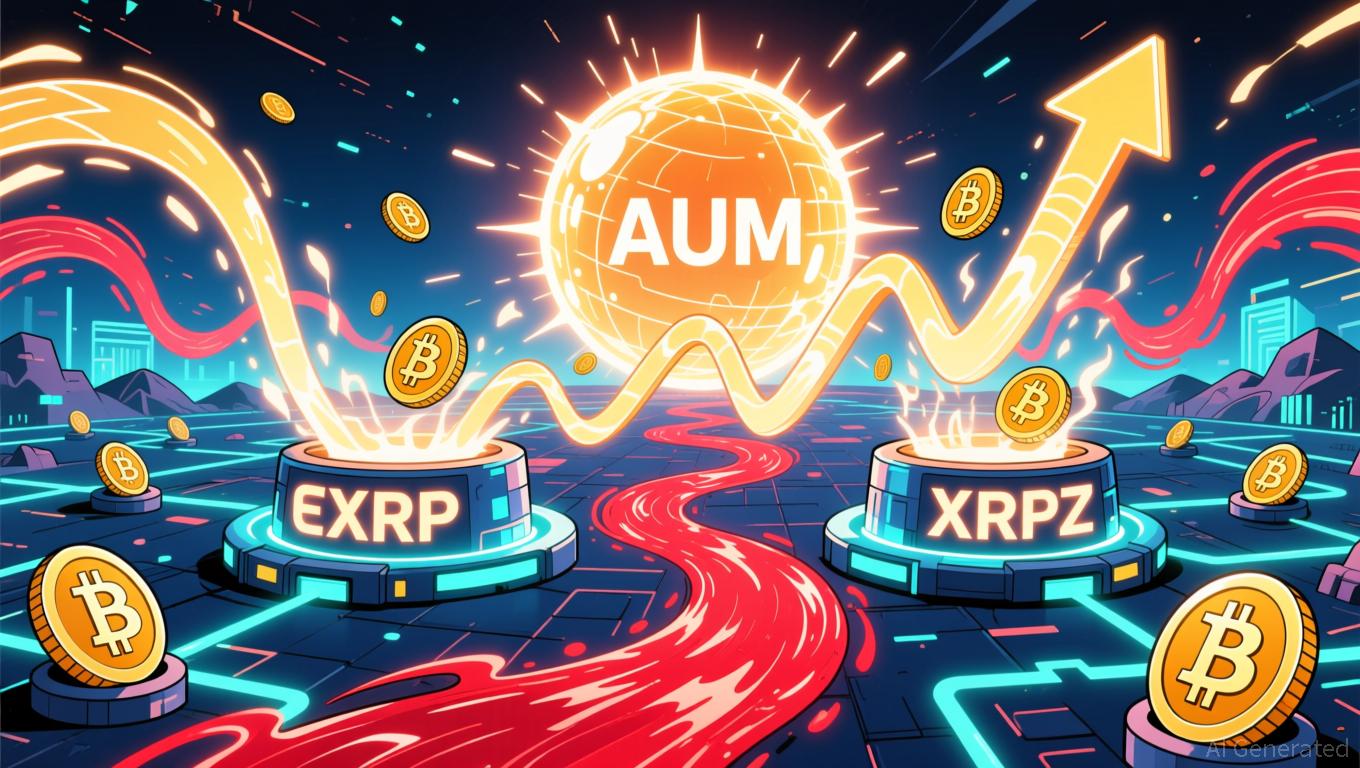AAVE +0.54% As Institutional Interest in Euro Stablecoins Continues to Rise
- Aave (AAVE) rose 0.54% in 24 hours to $186.75, reflecting growing institutional interest in EU stablecoin infrastructure. - Deutsche Börse plans to integrate EURAU stablecoin into its custody services, expanding digital-asset capabilities under MiCA regulations. - The move aligns with EU efforts to reduce reliance on U.S. stablecoins and promote euro-pegged alternatives through regulated frameworks. - Institutional adoption of stablecoins may indirectly benefit DeFi platforms like Aave by enhancing liqui
On November 27, 2025,
Institutional Infrastructure for Euro Stablecoins Grows
Deutsche Börse has revealed plans to incorporate the EURAU stablecoin, created by AllUnity, into its financial market systems. This step is part of a larger effort to broaden the group’s digital asset services, building on previous partnerships with Circle’s EURC and Societe Generale-Forge’s EURCV. The rollout will start with institutional custody through its central securities depository, Clearstream, and is set to eventually cover the entire range of services.
This development highlights the expanding influence of stablecoins in institutional finance. Deutsche Börse’s goal is to enable on-chain cross-border payments and digital asset transactions for institutional clients. The initiative is in line with the Markets in Crypto-Assets (MiCA) regulations, which have been active since late 2024 and are designed to advance the digitalization of Europe’s financial sector.
Strategic Moves in the EU Stablecoin Sector
By integrating EURAU, Deutsche Börse is underscoring the growing involvement of established financial institutions in the stablecoin market. The EURAU token, issued by a German e-money institution licensed by BaFin, adds to the range of stablecoins already available from both bank-supported and U.S.-based providers.

This movement is part of a wider European push to lessen reliance on U.S. dollar-backed stablecoins, with several EU-issued stablecoins now available under MiCA. Earlier this month, a group of European banks, including ING and UniCredit, introduced a new euro-linked stablecoin. Likewise, ODDO BHF launched a MiCA-compliant euro stablecoin in October 2025.
Stephanie Eckermann, a member of Deutsche Börse Group’s executive board, highlighted that this integration furthers the company’s aim to connect traditional finance with digital advancements. “Incorporating institutional-grade stablecoins empowers our clients to confidently explore innovative opportunities in digital finance,” she said.
Potential Impact on Aave and DeFi
The increasing adoption of stablecoins by institutions could have positive effects on DeFi platforms such as Aave, which have long enabled digital asset lending and borrowing. As euro stablecoins become more prominent and liquid in institutional circles, platforms offering interoperability and custody services may experience greater demand.
AAVE’s latest price trends indicate a sense of optimism in the market, particularly as institutional-grade digital asset infrastructure expands. Despite the token’s declines over both short and long periods, the momentum behind EU stablecoin adoption signals changing market dynamics that could drive broader DeFi usage and integration.
With the European Union advancing a regulated and robust digital finance environment, platforms that deliver efficient, compliant, and scalable solutions are well positioned to benefit from these changes. Aave’s function in enabling stablecoin-based lending and borrowing could become even more significant as institutional participants increasingly utilize digital financial tools.
Disclaimer: The content of this article solely reflects the author's opinion and does not represent the platform in any capacity. This article is not intended to serve as a reference for making investment decisions.
You may also like
Australia’s Cryptocurrency Regulations Set to Unlock $24 Billion in Value While Enhancing Investor Protections
- Australia introduces 2025 Digital Assets Framework Bill to unlock $24B productivity gains while imposing strict client asset safeguards. - Legislation creates two new crypto financial product categories under Corporations Act, requiring AFSL licensing for platforms and tokenized custody services. - Exemptions for small operators (<$10M volume) balance innovation with regulation, aligning with global trends like U.S. GENIUS Act and SEC's Project Crypto. - Industry debates regulatory proportionality as Aus

Nexton Connects Traditional Veterinary Clinics with Modern Technology Through $4M AI Investment
- Nexton Solutions secures $4M to launch PetVivo.ai, an AI platform slashing veterinary client acquisition costs by 50–90%. - Beta results show 47 new clients per practice in six months, with a $42.53 CAC—far below industry averages. - Targeting 30,000 U.S. practices, it projects $12M ARR in Year 1, scaling to $360M by Year 5 with SaaS margins of 80–90%. - Strategic AI alliances, like C3.ai-Microsoft and Salesforce’s AI CRM focus, highlight the sector’s growth potential.

Bitcoin News Today: Nasdaq Promotes IBIT Options to Premier Gold Standard Liquidity Level
- Nasdaq ISE proposes quadrupling IBIT options limits to 1M contracts, aligning with high-liquidity ETFs like EEM and GLD . - Current 250K contract cap hinders institutional strategies; IBIT now leads Bitcoin options by open interest, surpassing Deribit. - Proposal includes removing FLEX IBIT position limits, enabling customized hedging for large funds, with experts calling it "routine" for high-volume assets. - SEC's December 17 comment deadline precedes potential approval, which could accelerate Bitcoin'

XRP News Today: XRP ETF Inflows Surpass Bitcoin Withdrawals Amid Changing Institutional Investment
- XRP ETFs absorbed 80M tokens in 24 hours, driven by institutional/retail demand, pushing AUM to $778M and outpacing Bitcoin outflows. - Grayscale's GXRP and Franklin Templeton's XRPZ led with $67.4M and $62.6M inflows, capitalizing on Ripple's $125M SEC settlement enabling spot ETFs. - ETFs pressured XRP's circulating supply, signaling confidence in its cross-border payment utility while technical indicators show cautious price recovery potential. - Market divides persist between ETF liquidity and direct
